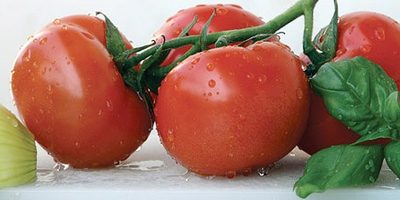
Australian ready meals are saltier than ever: study
Download the full report "Changes in salt levels in ready meals, Australia (2010-2017)" (PDF 383KB)
Download the table of results: highest and lowest salt ready meal products, 2017 (PDF 315KB)
It’s a 900-million-dollar industry taking over our supermarket aisles, but some ready meals contain more than an entire day’s worth of salt in a single serve and according to new research published today, they’re getting saltier.
From those products surveyed, researchers found the average ready meal from the supermarket freezer, fridge and shelf of Coles, Woolworths, ALDI and IGA contains 50 per cent of an adult’s recommended daily salt intake1, with some containing well over the maximum daily amount of salt in a single serve.
Released today as part of the Unpack the Salt campaign, the report by The George Institute for Global Health and VicHealth2 examined the salt content of 1478 supermarket ready meals including popular pasta, curry and noodle dishes as well as traditional meat and vegetable meals.
Results revealed a concerning 31 per cent increase in the salt content of chilled ready meals3 - despite Australia’s commitment to a 30 percent reduction in population salt intake by 2025. The chilled ready meal category also experienced the biggest growth – with four times as many products available in 2017 compared to 20104.
Key findings
- Australia is feeding a growing appetite for quick and convenient meals – the number of supermarket ready meals captured increased 129 per cent from 208 products in 2010 to 473 products in 2017. There was no reduction in the average salt content of the entire ready meal range during this time
- The serving sizes of ready meals vary significantly, influencing how much salt is eaten in a single serve, for example; in the chilled ready meal range, Quick as Wok Chicken Teriyaki contains more than an entire day’s worth (or 117%) of the recommended maximum daily salt intake in just one serve (5.85g/serve), and is 22 times saltier than My Pasta Box Classic Tomato and Basil Penne (0.26g salt/serve)
- In the frozen ready meal range, CP Authentic Asia Prawn Wonton Tom Yum Soup with Ramen contains 96 per cent of the daily recommended maximum intake of salt in just one serve (4.79g/serve), and is almost 10 times saltier than The Sultan’s Kitchen Butter Chicken (0.53g/serve)
- In the ambient ready meal category (found on the supermarket shelf), Kraft’s Deluxe Mac & Cheese topped the highest salt content per 100 grams (1.96g salt/100g), almost 5 times saltier than SunRice Street Snack Chicken Satay (0.43g salt/100g).
The George Institute’s Public Health Nutritionist Clare Farrand said prepared meals may solve the ‘what’s for dinner dilemma’, however the cost of convenience can come at a cost to health.
“In choosing a convenience meal from the supermarket, many people don’t realise they might be choosing to eat on average half their recommended daily salt intake in a single serving alone, putting their health at risk,” Ms Farrand said.
There are healthier options out there, Ms Farrand said, for example one of the lowest salt options included a Michelle Bridges for ‘Woolworths Delicious and Nutritious range’ Beef and Barely casserole which contains 0.26 grams of salt per 100 grams and 0.89 grams of salt per serving.
Heart Foundation Victoria CEO Kellie-Ann Jolly said unpacking the facts is clear – reducing the amount of salt in processed and packaged foods could save thousands of lives each year by reducing heart, stroke and kidney disease.
“Until there is a commitment to reformulate these foods with less salt, we’ll continue to see an increase in the number of Australians with high blood pressure – a major contributor to heart disease and a condition that already affects close to six million Australian,” Ms Jolly said.
VicHealth CEO Jerril Rechter said people found it difficult to keep track of how much salt they’re eating as three quarters of it comes from processed and packaged foods – including ready meals.
“By choosing lower salt options and eating more fresh foods that don’t come in a packet, we can dramatically reduce our salt intake and protect ourselves from preventable and potentially deadly health conditions caused by a high salt diet,” Ms Rechter said.
Ms Rechter said Australia’s ready meal industry was experiencing rapid growth – making it an important focus for salt reduction: “If we are to achieve a 30 per cent reduction in Australia’s salt intake by 2025, we need to adopt targets to drive industry to reduce the amount of salt in their products.”
Unpack the Salt was launched in August by VicHealth and the Heart Foundation on behalf of the Victorian Salt Reduction Partnership to raise awareness about the high levels of salt in processed and packaged foods.
Tips for consumers
- Time-poor and looking for a convenient ready-made meal? Choose a lower-salt option by comparing the sodium content in the ‘per 100g’ columns on the nutrition information panel of different brands. For ready-meals, aim for less than 380mg sodium per 100g. Better still, cook from scratch with fresh ingredient and vegetables or choose frozen vegetables to supplement your meal
- The best way to reduce salt is to eat more fresh foods and reduce your reliance on processed and packaged foods
- Download the FoodSwitch app to scan product barcodes to find an alternative product with a lower sodium content. Available to download from foodswitch.com.au
- Visit unpackthesalt.com.au for tips and resources on how to identify salt in packaged foods and reduce your salt intake.
1 World Health Organisation (WHO) recommends adults consume a maximum 5g/1 teaspoon salt each day.
2 "Changes in salt levels in ready meals, Australia (2010-2017) report" by The George Institute for Global Health and VicHealth.
3 Average salt content of chilled ready meals increased between 2010-2015 – from 0.58g/100 to 0.76g/100g.
4 In the chilled ready meal category there was 158 products available in 2017 compared to 29 in 2010.








